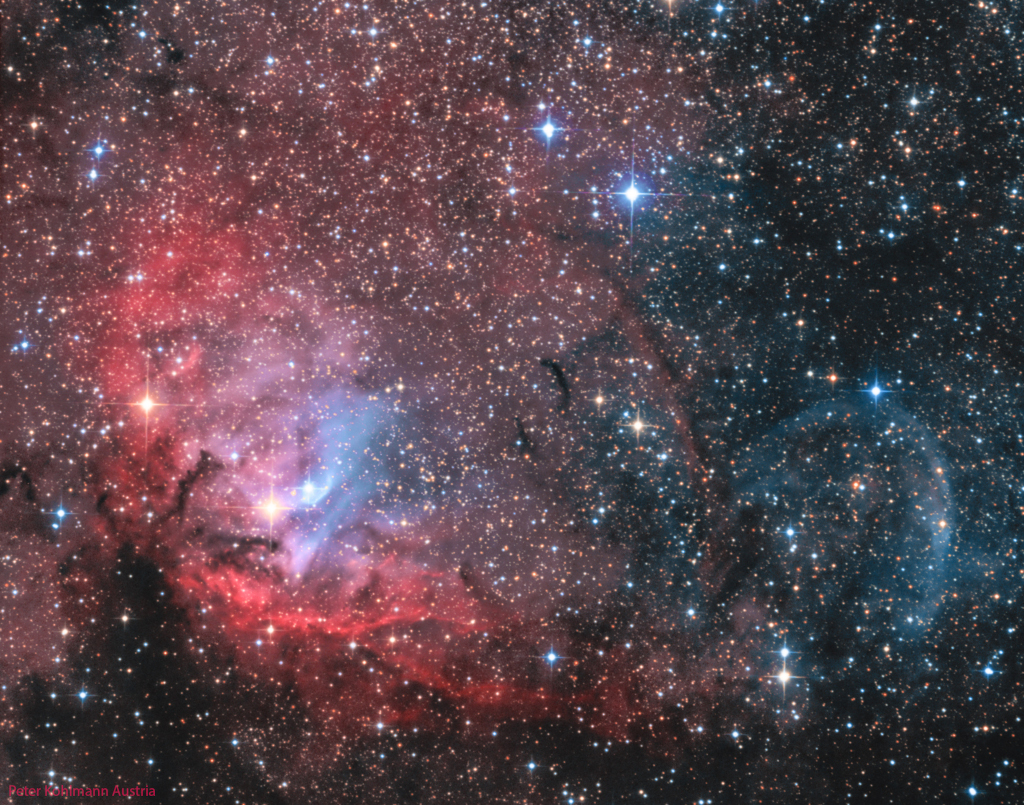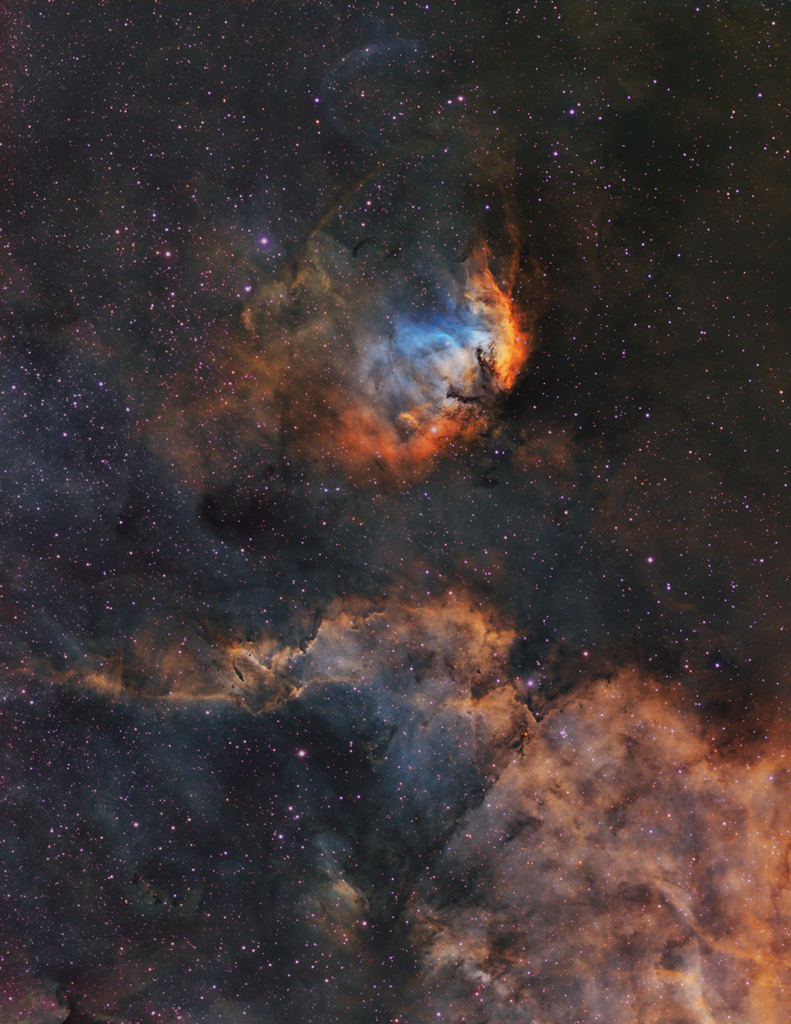2024年8月28日
Tulip Nebula and Black Hole Cygnus X-1
Image Credit & Copyright: Anirudh Shastry
Explanation: When can you see a black hole, a tulip, and a swan all at once? At night — if the timing is right, and if your telescope is pointed in the right direction. The complex and beautiful Tulip Nebula blossoms about 8,000 light-years away toward the constellation of Cygnus the Swan. Ultraviolet radiation from young energetic stars at the edge of the Cygnus OB3 association, including O star HDE 227018, ionizes the atoms and powers the emission from the Tulip Nebula. Stewart Sharpless cataloged this nearly 70 light-years across reddish glowing cloud of interstellar gas and dust in 1959, as Sh2-101. Also in the featured field of view is the black hole Cygnus X-1, which to be a microquasar because it is one of strongest X-ray sources in planet Earth’s sky. Blasted by powerful jets from a lurking black hole, its fainter bluish curved shock front is only faintly visible beyond the cosmic Tulip’s petals, near the right side of the frame.
Back to School? Learn Science with NASA
Tomorrow’s picture: open space
郁金香星云与黑洞天鹅X-1
影像提供与版权: Anirudh Shastry
说明: 何时能同时见到黑洞、郁金香和天鹅?答案是夜晚;假如时间抓得很精准,而望远镜又朝着正确的方向。影像中的这团明亮泛红、名为郁金香星云的星际气体与尘埃云,是天文学家斯图尔特·沙普利斯在1959年所编录的星表里,编号Sh2-101的天体。而形状复杂、宽将近70光年的美丽郁金香星云,则在天鹅 座方向约8,000光年远处展现风华。位于天鹅座OB3星协(成员包括O型星HDE 227018)边缘的年轻活跃恒星,发出强烈的紫外辐射,电离郁金香星云的原子并驱动星云发出辐射。此外,出现在这片视野里的,还有黑洞天鹅座X-1;它是地球天空中最强烈的X射线源之一,故也可能是一颗微类星体。在这张影像的右侧,可见受到这颗黑洞的强烈喷流之冲击,从而形成的、位于郁金香星云花瓣后方的暗淡泛蓝弓形激波前沿。
重返校园?与NASA一起学习科学
明日的图片: open space




Pingback: 月掩土星 – WERLS-树莓派 raspberrypi
Pingback: 月掩土星 – NASA中文